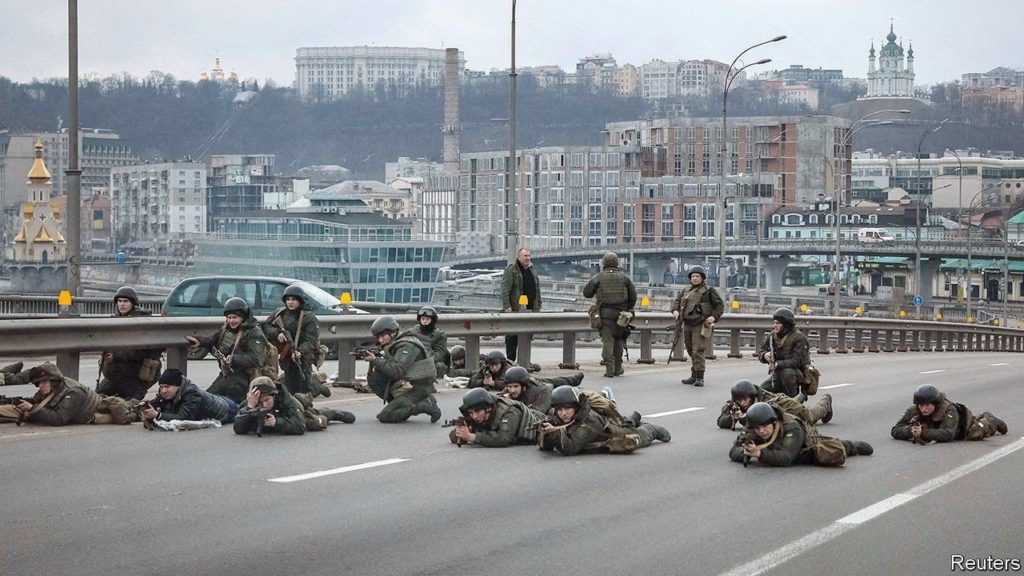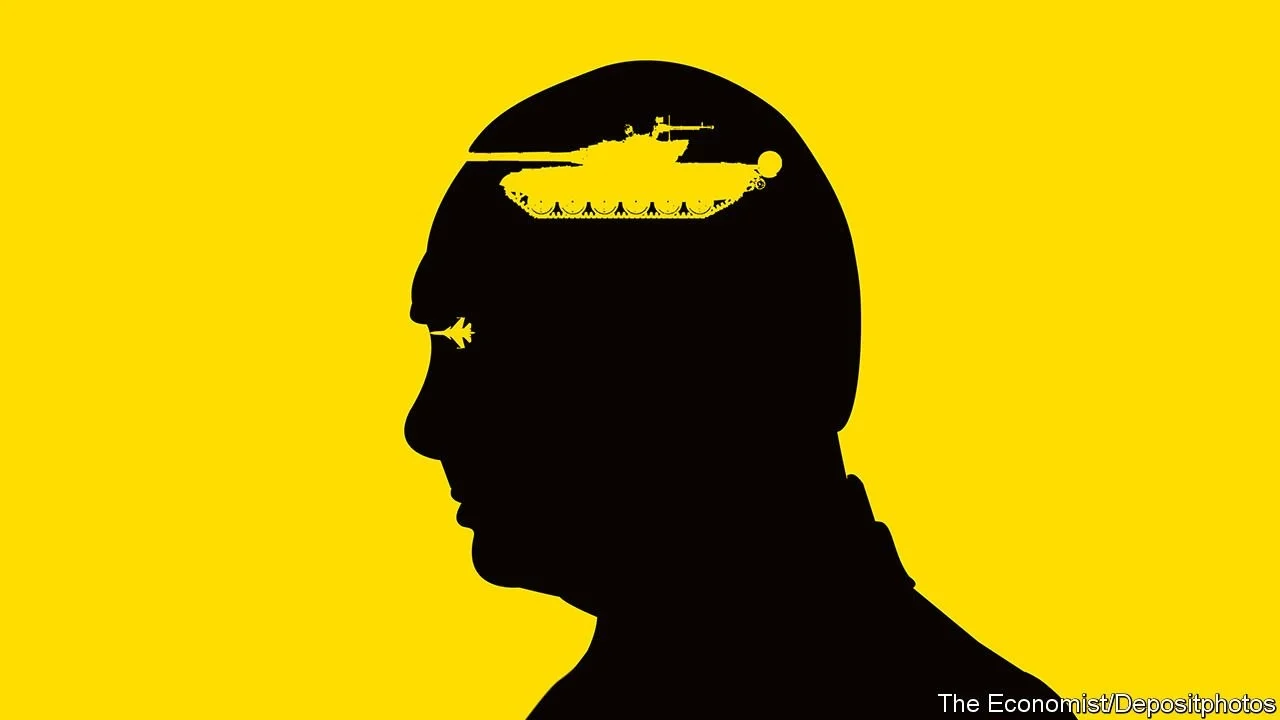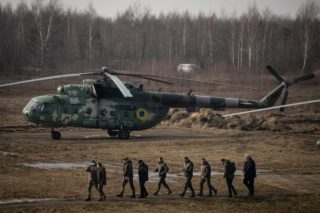
WHEN RUSSIA’S war on Ukraine began before dawn on Thursday, many expected blitzkrieg. Over 150,000 Russian soldiers were poised on Ukraine’s border; warplanes were massed in Belarus; paratroopers were at the ready. Yet in many ways, the war’s first two days have been less overwhelming.
The Russian missile strikes that opened the war were relatively light, not the relentless onslaught that many had predicted. There were reports of dud missiles, too. One was seen lodged in the pavement in Kharkiv, Ukraine’s second-largest city. Russia did not wipe out Ukraine’s air force on the ground; planes were seen aloft throughout the first day of fighting. Ukrainian soldiers made good use of their Western-supplied anti-tank weapons, taking out plenty of armoured vehicles.
Russia did make important advances. Its forces made deep thrusts in the south, with heavy fighting around Kherson, a strategic city on the Dnieper river. They also surrounded Kharkiv, in the east, and took Konotop, around 200km east of Kyiv. New thrusts seemed to materialise on February 25th. Video footage appeared to show Russian forces on the move in Stolin, southern Belarus, which would indicate an advance into western Ukraine, hundreds of kilometres west of Kyiv. There were also unconfirmed reports of fighting in Odessa, a southern port.
Yet it was slower going than the Kremlin might have hoped. “Moscow’s thinking on this war seems to have been coloured by war optimism,” says Michael Kofman of cna, a research group. “It looked as though Russian forces were expecting a quicker [Ukrainian] military collapse and easier gains.” British defence intelligence said that it was unlikely that Russia had achieved “its planned Day 1 military objectives”, noting that “Ukrainian forces have presented fierce resistance across all axes of Russia’s advance.” Britain also estimated that there had been 450 Russian casualties; Ukraine’s armed forces claimed thousands, though that seems unlikely. A Russian effort to grab an airport near Kyiv with a brazen helicopter assault was not a success, with Ukraine quickly recapturing the facility. It is thought to have changed hands several times. One source says that it is now back in Russian hands, though Ukraine has destroyed the runway itself.
It is clear that Kyiv is the prize. Russia approached the capital from Belarus along several axes, both east and west of the capital, in a pincer movement. Not all were successful. An attack at Chernihiv, east of the Dnieper and 130km north-east of Kyiv, is thought to have foundered. Britain says that the “bulk” of Russian forces heading for Kyiv remained more than 50km from the city centre.
Some advance forces did get there. At mid-morning, Ukraine’s armed forces warned that the enemy had reached Obolon, a north-western district of Kyiv, instructing residents to convey reports of troop movements and to “neutralise the occupier” with Molotov cocktails. Ukrainian television broadcast instructions for making them. Bridges around the city were blown up to slow down the Russians’ progress.
Some analysts are pessimistic about the city’s prospects. “The situation does look dire at the moment,” wrote Konrad Muzyka of Rochan Consulting. If the capital were to fall, he notes, “the expectation is that all fighting Ukrainian units will surrender and that military operations will cease. This conflict may be shorter than anyone expected.” Others are less sure.
A week before the war, the Royal United Services Institute, a think-tank, published a report describing the substantial penetration of Kyiv by Russian intelligence and special-forces personnel over recent months. Nick Reynolds, one of the co-authors of that report, says he is watching closely to see whether these are activated, or neutralised by Ukraine’s security services, who have been monitoring them. Though lightly-armed Russian fifth-columnists could not seize and hold strategic sites for long, the “dual threat” of tanks approaching from the outside—once they get there—and subversion within could undermine the government.
Ben Barry, a former British Army officer now at the International Institute for Strategic Studies, another think-tank, warns against drawing too many lessons from the first two days of fighting. Though the Russians may not have achieved their initial objectives quickly, “neither did the British and Americans on D-Day”. What was important then, and now, he says, is that the attackers established a critical mass of forces that could not be evicted.
Indeed, Russian (like Soviet) military doctrine calls for multiple “echelons” of forces, with heavy forces kept in reserve. Russia has committed only around 60 battalion tactical groups out of the 110 or so it had massed on Ukraine’s border, according to a Western official. There has been little use of cyber- or electronic-warfare or drones. Some officials suggest these have not been used because of Russian deficiencies; others suspect they are simply being held in reserve.
Despite its failure to ground the Ukrainian air force and neutralise surface-to-air missiles quickly, Russia is likely to gain air superiority at some stage. That will make it hard for Ukraine’s army to concentrate forces and move reserves to weak points, because agglomerations of force can be struck from the air. Mr Barry draws a comparison to America’s “thunder run” to Baghdad in 2003. Relatively modest American armoured forces could move at will around the city because the Iraqi defenders could not concentrate enough force to stop them.
That does not mean it will be easy going for Russia. Ukraine’s armed forces are concentrating in cities, giving them a stronger defensive position, says the Western official. Even with command of the skies, urban warfare would be difficult and costly for both Russians and Ukrainians. Though Russia is not averse to the indiscriminate use of force where required—see Grozny, in Chechnya, and its bombing campaign in Syria—it might have reason to be cautious. A recent social-media video from Chechnya’s leader Ramzan Kadyrov, in which he demanded Volodymyr Zelensky, Ukraine’s president, apologise to Vladimir Putin, his Russian counterpart, suggested he was more than ready to provide support. “Russia likely thought a large number of Ukrainian casualties would make it more difficult to achieve a long-term political solution,” notes Rob Lee of King’s College London.
On February 25th Mr Putin urged Ukraine’s armed forces to overthrow the government and negotiate with the Kremlin. “It looks like it will be easier for us to come to terms with you than with this gang of drug addicts and neo-Nazis,” he said. There was little sign that Ukrainian generals were tempted. “The question,” says Mr Lee, “is what would Russia be willing to do if Ukrainians continue to resist and start an insurgency in cities?”
By The Economist




